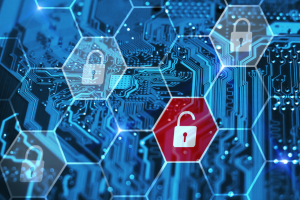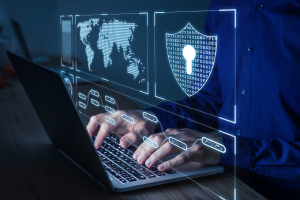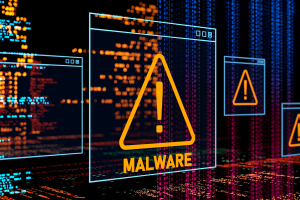

AWARENESSS
MONTH
Raising the Shield:
Embracing Cybersecurity Awareness Month
In the age of digital transformation, where our lives and businesses are intricately woven into the fabric of the online world, the importance of cybersecurity has never been more critical. As we navigate a landscape rich with innovation, opportunities, and connectivity, we also encounter a burgeoning realm of cyber threats, making every October a time of heightened vigilance and reflection. Welcome to Cybersecurity Awareness Month, a 31-day journey dedicated to fortifying our digital defenses, championing the cause of cybersecurity, and empowering individuals and organizations to protect their digital realms.
This annual initiative serves as a global reminder that safeguarding our digital lives and assets is a shared responsibility. From individuals who use smartphones, tablets, and laptops in their daily routines, to businesses that rely on digital infrastructure for their operations, the importance of cybersecurity spans across every facet of our modern existence.
In this article, we delve into the heart of Cybersecurity Awareness Month, exploring its significance, themes, and the growing need for digital resilience in a world where cyber threats continue to evolve. Together, we’ll embark on a journey to bolster our digital defenses, foster a culture of security, and champion the cause of cybersecurity in an ever-connected world.
Mitigating The Impact of False Data Breaches.
A strong cybersecurity stance can efficiently diminish the consequences of fabricated data breaches, much like it handles genuine breaches.
Below are several recommended practices for organizations to proactively address evolving cyber threats and strategies:
1. Conduct In-Depth Analysis of Suspected Data Breaches
Rather than hastily reaching conclusions, it’s crucial to thoroughly assess the credibility of any breach allegations before resorting to extreme measures such as public declarations. Forming a specialized team tasked with validating and examining the legitimacy of suspected breaches, coupled with a well-defined public relations approach, empowers organizations to swiftly communicate precise details, mitigating the potential damage to their reputation caused by unfounded assertions.
2. Establish a Comprehensive Communication Strategy
To prevent scenarios akin to the challenges faced by the Maine Attorney General’s office, organizations must devise a structured approach for addressing suspected data breaches. Establishing transparent communication channels and hierarchical protocols helps mitigate the risk of impulsive disclosures fueled by unverified data. A meticulously outlined plan ensures clarity regarding spokespersons, disclosure criteria, contact persons, and timing. By minimizing confusion and panic, organizations assert control over the narrative, showcasing their steadfast dedication to safeguarding data integrity.
3. Implement Vigilant Monitoring and Alert Systems
Deploying preemptive security measures featuring centralized monitoring and alert systems empowers organizations to pinpoint aberrant behaviors suggestive of actual threats, even amid inquiries into potential false alarms. Integrated security frameworks like SASE (Secure Access Service Edge) offer comprehensive visibility into network activities, enabling organizations to decisively validate breach claims. Leveraging SASE solutions facilitates prompt detection of suspicious access endeavors, including those involving compromised or fabricated credentials.
4. Employ Canary Tokens
Canary tokens serve as valuable assets for identifying and addressing counterfeit data breaches. Strategically positioned as simulated login credentials, they are not intended for authentic usage. Should an unauthorized attempt be made to access the corporate network using these tokens, it signals a breach or an active breach endeavor, prompting an immediate alert for swift mitigation. Canary tokens not only expedite the detection of genuine threats but also aid in distinguishing false data breach assertions by remaining unused.
The Important of Cyber Hygiene:
Protecting Your Digital World
In today’s digitally driven age, our lives are intricately intertwined with technology. We rely on computers, smartphones, and other internet-connected devices for various aspects of our daily routines. Yet, as we immerse ourselves deeper into the digital realm, the need for proper cyber hygiene becomes increasingly paramount.
What is Cyber Hygiene?
Cyber hygiene is not too dissimilar from the personal hygiene practices we follow to stay healthy. It’s a set of routine actions and behaviors aimed at safeguarding our digital world from unauthorized access and malicious threats. Just as washing our hands and maintaining cleanliness can help prevent illnesses, cyber hygiene practices serve as the fundamental building blocks of digital security.
Making Cyber Hygiene a Habit
Just as washing our hands has become a reflex in today’s world, integrating good cyber hygiene practices into our daily routines is equally important. Whether you’re transferring money online, browsing the web, or simply communicating via email, consistent cyber hygiene practices should be second nature.
Here are a few key cyber hygiene practices to consider:
Use Strong, Unique Passwords: Your password is the first line of defense. Ensure it’s robust and distinct for each online account.
Implement Two-Factor Authentication (2FA): This adds an extra layer of protection by requiring not only a password but also a secondary code, making it much harder for unauthorized access.
Regular Software Updates: Keep your devices and software up to date to patch vulnerabilities that cybercriminals could exploit.
Beware of Phishing: Be cautious when receiving emails or messages from unknown sources, and avoid clicking on suspicious links or downloading attachments.
Data Backups: Regularly back up your important data to prevent catastrophic loss in the event of a cyber incident.
Secure Wi-Fi Networks: Always use strong passwords for your Wi-Fi, and encrypt your network to prevent unauthorized access.
Privacy Settings: Review and adjust the privacy settings on your social media and online accounts to control what information is shared.
Consistency is Key
Consistency and discipline are the cornerstones of effective cyber hygiene. Just as personal hygiene requires daily attention to keep us healthy, so does our digital hygiene to protect our online presence. By adopting these practices and making them part of your daily routine, you can maintain a high level of protection and reduce vulnerabilities that cybercriminals might exploit.
In a world where our digital activities continue to expand, embracing good cyber hygiene practices is not a choice but a necessity. It’s your armor against the ever-evolving landscape of cyber threats, ensuring that your digital world remains secure and resilient.
Experience industry-leading security solutions from a unified, powerful platform, safeguarding your digital assets.
SPMAS, or Security Perimeter Management & Analytics Services, is your shield against digital intruders. We provide robust management and cutting-edge...
STDR, or Security Threat Detection & Response, is your digital fortress's guardian. It's all about identifying and reacting to cyber...
SPAA, or Security Perimeter Alert Analysis, is your digital sentinel. We analyze security alerts at the perimeter, providing insights and...



